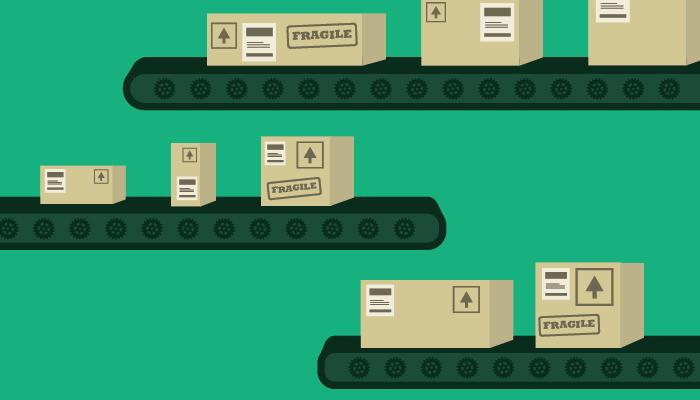One of the greatest modern conveniences is shopping online. What’s better than finding the best deal, at any time of day, and having it show up on your doorstep – without ever putting pants on or leaving the house? It’s an ideal situation, but some businesses make it even better by facilitating:
- in-store pickup to save shipping costs
- in-store and phone returns for online orders
- in-store ordering shipped directly to the consumer
This type of omni-channel support is just one of the many benefits made possible by order management systems (OMS) – and it’s the kind of unified, flexible, and convenient experience that customers have come to expect.
Whether you’re selling to other businesses or directly to consumers, the proper OMS provides all the tools and data analytics required to efficiently process sales from start to finish. In this article, we’ll examine what type of businesses need order management, features to look for when choosing a system, and the additional benefits of using one.
Common features of order management
Order management is used by a wide variety of industries, but is most prominent in supply chain management. No matter what the industry though, the reasons for using OMS are similar. An OMS brings various independent components into a centralized place. This means that separate information is aggregated to provide a single source of order status information. These details include:
- product details (descriptions, attributes, locations)
- global inventory availability (in-store, in warehouse, at drop ship locations)
- delivery due dates
- marketing data (such as pricing and discounts)
- customer and prospect details
- financials (accounts payable, etc.)
- order processing (selection, picking, packing and shipping)
This makes it easier for customers to find products, information, and answers. It also helps businesses eliminate inconsistencies, reduce order confusion, provide fulfillment options, and increase efficiency and profits.
Tangible business benefits of order management
Boosting productivity and increasing revenue always sounds great. But what does multi-channel order aggregation with global visibility to inventory, delivery, and service availability really look like? Here are a few advantages that order management offers:
- Simplifies customer orders by allowing users to access, modify, or change a line item in an entire order.
- Provides call center representatives with real-time access to order, inventory, and delivery information. This leads to faster resolution time for customer inquiries and increased customer satisfaction.
- Allows you to query inventory at any location to fill orders from the optimal location or vendor. This reduces shipping costs and expedites delivery times.
- Ability to monitor cycle times and identify bottlenecks to streamline order processing.
- Capture customer data at the beginning of the relationship to eliminate asking for repeat information at different phases.
- Identify product flaws to reduce returns and cancellations.
- Ability to monitor stock levels to ensure you’re meeting quantity demands.
This type of single repository for order information can automate the fulfillment process, ensure accuracy, and create a smooth customer experience.
Should you be using order management?
Depending on the needs and complexity of the company, order management can be just one feature of business software, or a powerful standalone solution that integrates with additional systems. The type of products, degree of customization, price quotes, and your audience will dictate the appropriate software solution for your business.
A retail store may simply require a POS with order management features, while a large operation might need to integrate order management with either customer relationship management (CRM), project portfolio management (PPM), supply chain management (SCM) – or all three.
If you’re not currently using an order management system or software with this feature, here are a few signs that it’s time to start looking for one:
- Having a central database would significantly reduce time spent each day searching for information.
- You are manually printing labels, invoices, and notifying customers of updates.
- Customers are receiving the wrong orders, experiencing delays, and having payment or billing issues that can’t be resolved swiftly.
- You need a better handle on cash flow management.
- You don’t know what inventory you have or which products in your store are selling best.
Of course, these are not the only issues that suggest a software need – and having a system in place won’t automatically solve all the problems above.
Order management starts the moment a buy button is clicked. If you can’t answer specific inventory, administration, and shipping questions, then it may be time to upgrade to a system that can.

